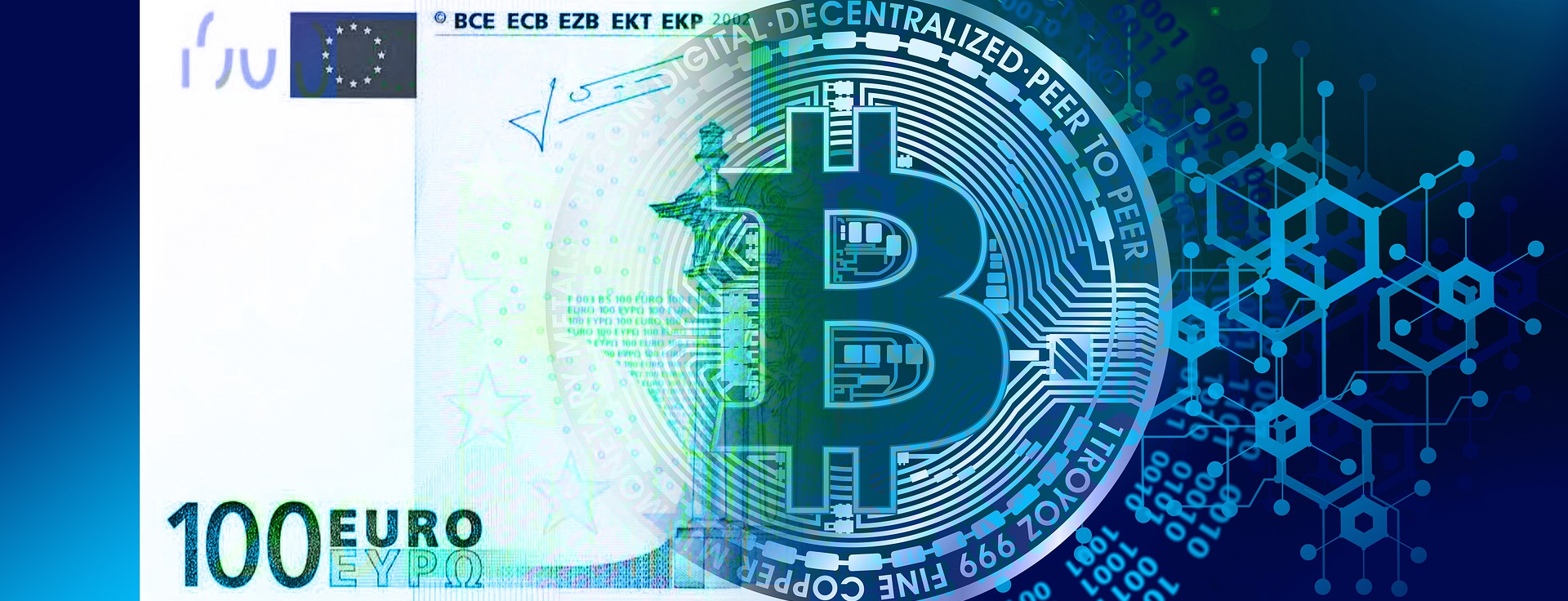
How does the current Eurosystem work? Does the quantity of euros increase if you borrow them from a bank? Can the central bank "print" more euros? And how does Bitcoin differ as a monetary system compared to the euro? This blog post provides answers to these questions and more.
Euro
The euro is Finland's official currency. People use it for daily transactions, and many also save in euros. Have you ever stopped to think about what the euro actually represents?
- The euro is the common currency of the European Union, introduced approximately 25 years ago at the beginning of 1999. As of the beginning of 2024, the euro serves as the official currency for 20 EU member states.
- The Euro can be considered an asset, but it is also always a debt. For instance, euros in cash form are debts of the central bank to the holder, making the holder a debtor to the central bank. Euros held in bank accounts are debts of the bank to the account holder, as the bank holds them but the customer owns them.
- The euro is a fiat currency. A fiat currency, such as the euro and the dollar, is money that does not have intrinsic value but is recognized as a legal tender by governmental regulation or law.
- Although this text focuses on the euro, other fiat currencies, like the US dollar and the Chinese yuan, operate similarly in principle.
Quantity of Euros in Circulation
The quantity of euros in circulation is not fixed but varies continuously. Several entities, including individuals, businesses, banks, and the central bank, influence the quantity. So how does the quantity of euros increase or decrease?
- Since the euro is a debt, euros are created when more debt is incurred. For example, euros are created when an individual or business borrows from a bank.
- When a bank grants a loan, both its receivables and liabilities increase. A signed promissory note from a customer creates a receivable for the bank, making the customer indebted to the bank for euros.
- After signing the promissory note, euros deposited into a customer's account represent a liability of the bank to the customer. Banks often pay deposit rate on these deposits as compensation.
- Thus, euros are created in situations like those described because the euros deposited into a bank customer's account are not taken from the bank's existing reserves but are "created out of thin air," leading to an increase in the money supply.
- As the amount of euros grows when loans are taken, it decreases when loans are repaid. Repaying a loan reduces both the borrower's and the bank's liabilities.
- When euros leave from a customer's account, the bank's debt to the customer decreases. Simultaneously, the customer's debt to the bank decreases.
- Given that the euro is a debt, when both the customer's and the bank's liabilities decrease, the euro supply also decreases as loans are repaid.
Central Bank's Influence on the Quantity of Euros
Most Europeans know an institution called The European Central Bank (ECB). It plays a pivotal role in the euro's operation, responsible for the Eurosystem's monetary policy. But how does the ECB practically influence the quantity of euros?
- In addition to euros being created when individuals borrow from banks, they are also created when banks borrow from the central bank, which, in the eurozone, is the ECB.
- When a bank borrows euros from the ECB, the ECB creates euros equivalent to the amount lent, leading to an increase in the money supply.
- The ECB influences the quantity of euros created through its interest rate. This interest rate is the rate banks pay the central bank for borrowing euros, often referred to as the "cost of money."
- During periods of low-interest rates, such as between 2015 and 2021, the quantity of euros in circulation significantly increased. As a result, as of 2024, the quantity of euros (M1 money supply) nearly doubled over the previous ten years.
- In addition to lending to banks, the ECB also creates euros by purchasing various securities, including government and corporate bonds, as well as money market instruments.
- When the ECB purchases these securities, it creates euros equivalent to the price paid to the banks, leading to an increase in the money supply.
- These purchased securities are then added to the ECB's balance sheet, which has roughly tripled in size over the past ten years.
How Does Bitcoin Differ from the Eurosystem?
The analysis above shows that the euro operates on a debt-based system. Bitcoin, on the other hand, is fundamentally different as debt does not play a role within the Bitcoin system. While new euros are created through borrowing or for central bank securities purchases, essentially at no cost, generating new bitcoins requires miners to use mining equipment that consumes a significant amount of electricity. In simple terms, creating new bitcoins requires work, hence the name of Bitcoin's consensus algorithm, Proof of Work, whereas creating new euros is essentially a matter of pressing a button. This fundamental difference in the difficulty of creating new currency is a significant reason why Bitcoin experts believe the price of Bitcoin has been on an upward trend compared to the euro over its approximately 15-year history and why they anticipate this trend will continue.
Another significant difference between the Eurosystem and Bitcoin lies in how some parties can affect how new euros and bitcoins are created. The creation of euros is influenced directly and indirectly by the ECB's decisions. The amount of new euros created through borrowing and for central bank securities purchases depends on the ECB's monetary policy. This monetary policy is determined by the 26-member ECB Governing Council, composed of the central bank governors of euro area countries and six members of the ECB's Executive Board. Therefore, euro users must trust that the monetary policy decided by the ECB Governing Council is always appropriate.
Bitcoin is also completely different from the Eurosystem in this respect. Bitcoin's so-called monetary policy has been immutable and transparent throughout its history. A pivotal aspect of Bitcoin's monetary policy is the block reward halving that occurs approximately every four years, reducing the number of bitcoins created, ultimately leading to a maximum of 21 million bitcoins. This means Bitcoin's future monetary policy is known and transparent to all. In contrast, the Eurosystem's monetary policy is predictable only up to the next policy meeting, which typically happens every six weeks. For this reason, Bitcoin is sometimes referred to as a "trustless" system, as its immutable monetary policy doesn't require trust in any group's decisions. Additionally, unlike bitcoin, the euro does not have a maximum supply, which has led, and will probably continue to lead, to an increase in the number of euros when observed in the slightly longer term.
Conclusion
As highlighted in the analysis above, the euro and Bitcoin fundamentally differ as monetary systems. The differences between the Eurosystem and Bitcoin can be summarized as follows:
Creation of New Currency:
- Euro: Incurs no cost; occurs through borrowing and for central bank securities purchases.
- Bitcoin: Requires a cost; involves using mining equipment and consuming electricity.
Monetary Policy:
- Euro: Decided by the ECB Governing Council every six weeks. There is no maximum supply of euros.
- Bitcoin: Immutable and transparent monetary policy as well as a maximum supply of 21 million bitcoins.



